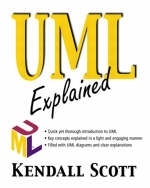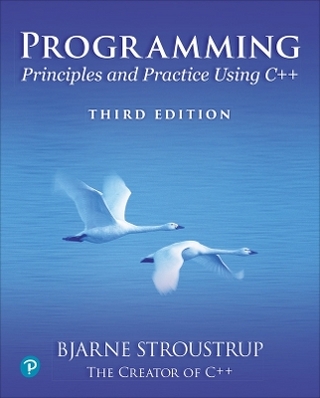
UML Explained
Seiten
2001
Addison Wesley (Verlag)
978-0-201-72182-9 (ISBN)
Addison Wesley (Verlag)
978-0-201-72182-9 (ISBN)
- Titel ist leider vergriffen;
keine Neuauflage - Artikel merken
This is an introductory explanation of the industry standard Unified Modeling Language. It is written specifically for the techno-novice. An HTML UML dictionary containing 600 terms is on the accompanying Website.
There are dozens of Unified Modeling Language (UML) books, but virtually all of them assume their readers have significant experience with modeling or object-oriented development. Not this one. Written by the co-author of the best selling UML Distilled, this book is utterly authoritative -- and it's also the simplest, least technical guide to UML ever written. With it, every participant in the modeling process can learn to master UML, starting from scratch. Begin by understanding the real value of modeling in software development and other endeavors, and how UML was explicitly designed to support iterative and incremental processes. Watch a project team use UML to identify the real-world objects associated with their business problem; capture scenarios that describe user actions and system responses ("use cases"); and define a system's functional requirements. Learn how UML helps teams identify relationships amongst objects that must be implemented to address a system's requirements. Next, use UML to describe business and process workflows; to determine how all of a system's objects will work together; and to specify how a distributed software system will actually be built.
There are dozens of Unified Modeling Language (UML) books, but virtually all of them assume their readers have significant experience with modeling or object-oriented development. Not this one. Written by the co-author of the best selling UML Distilled, this book is utterly authoritative -- and it's also the simplest, least technical guide to UML ever written. With it, every participant in the modeling process can learn to master UML, starting from scratch. Begin by understanding the real value of modeling in software development and other endeavors, and how UML was explicitly designed to support iterative and incremental processes. Watch a project team use UML to identify the real-world objects associated with their business problem; capture scenarios that describe user actions and system responses ("use cases"); and define a system's functional requirements. Learn how UML helps teams identify relationships amongst objects that must be implemented to address a system's requirements. Next, use UML to describe business and process workflows; to determine how all of a system's objects will work together; and to specify how a distributed software system will actually be built.
Kendall Scott is a UML trainer and consultant. With more than sixteen years of experience as a technical writer, he is skilled in converting complex, technical material into understandable and easy-to-use manuals.
Preface.
Organization of This Book.
Background.
Acknowledgments.
1. Why the UML?
2. The UML and Process.
3. Identifying Relevant Real-World Things.
4. Capturing Requirements.
5. Expressing How Things Work Together.
6. Refining the Structure of Things.
7. Describing Flows.
8. Tracking the Lives of Things.
9. Showing How Groups of Things Work Together.
10. Describing How Things Will Be Built.
Glossary.
Index.
| Erscheint lt. Verlag | 23.4.2001 |
|---|---|
| Verlagsort | Boston |
| Sprache | englisch |
| Maße | 188 x 231 mm |
| Gewicht | 290 g |
| Themenwelt | Mathematik / Informatik ► Informatik ► Programmiersprachen / -werkzeuge |
| Informatik ► Software Entwicklung ► Objektorientierung | |
| ISBN-10 | 0-201-72182-1 / 0201721821 |
| ISBN-13 | 978-0-201-72182-9 / 9780201721829 |
| Zustand | Neuware |
| Haben Sie eine Frage zum Produkt? |
Mehr entdecken
aus dem Bereich
aus dem Bereich
objektorientierte Entwicklung modularer Maschinen für die digitale …
Buch | Hardcover (2024)
Hanser (Verlag)
CHF 62,95
Entwicklung von GUIs für verschiedene Betriebssysteme
Buch (2023)
Hanser, Carl (Verlag)
CHF 55,95
Principles and Practice Using C++
Buch | Softcover (2024)
Addison Wesley (Verlag)
CHF 119,95


